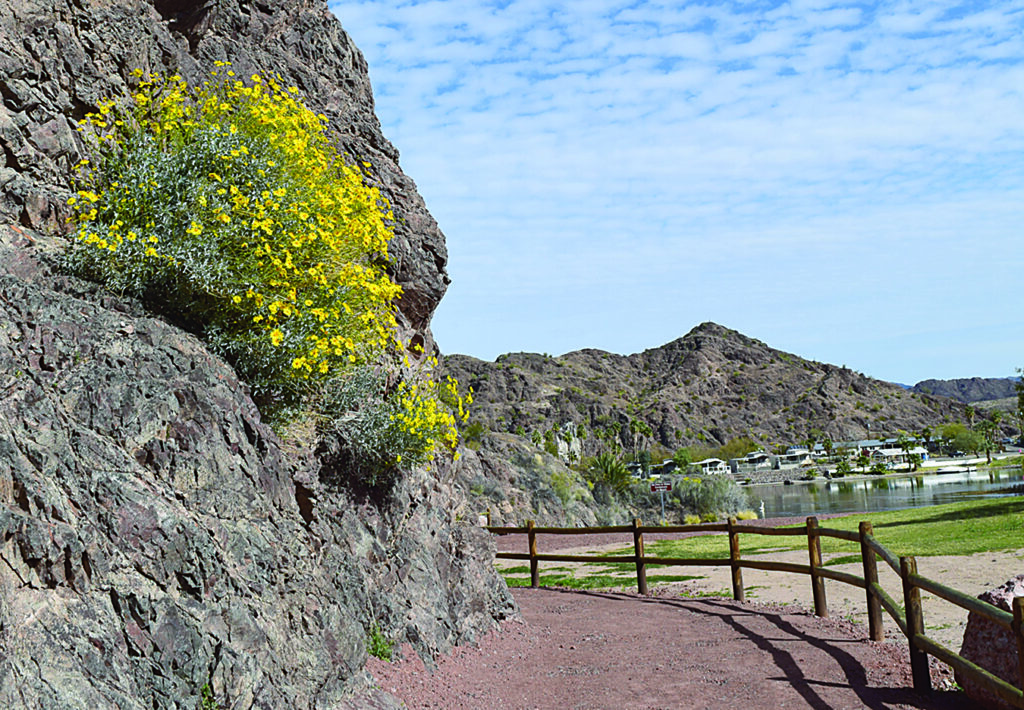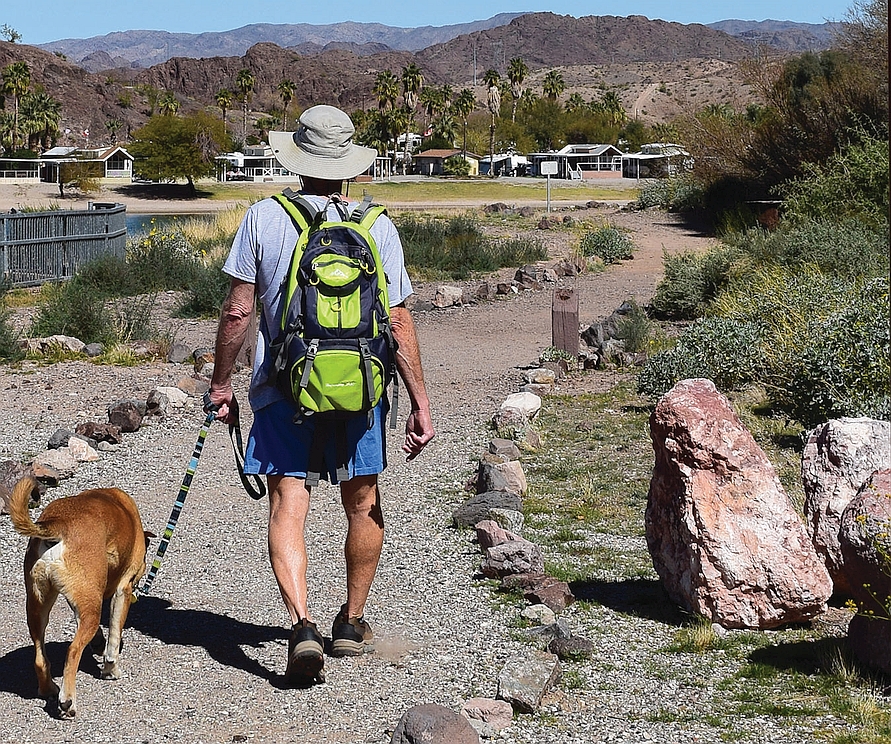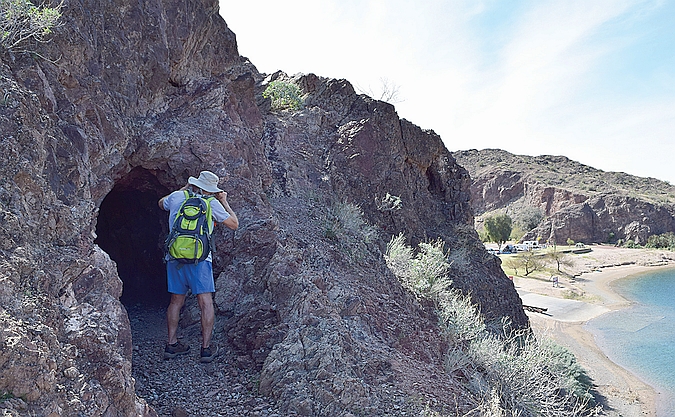Story and Photos by Cheryl Hartz
For temperate winter camping and hiking Arizona presents four wonderful state parks on the Colorado River. Between Parker and Lake Havasu City and within 30 miles of each other in Mohave and La Paz Counties, Lake Havasu, Buckskin Mountain, Cattail Cove, and River Island State Parks have much to offer and are worth the 3-hour or so drive from the Prescott area.

This time I’ll concentrate on River Island State Park. The park’s Wedge Hill Trail is short–only a mile round-trip–but steep enough to get the old ticker pumping. In February, we wore shorts and definitely broke a sweat.
Because the campground is between solid rock cliffs, if you want cell phone service, the top of the trail is the place to connect. You also get an awesome view of Parker Dam, the Colorado River, and California on its opposite bank. Take along your binoculars and scan the mountains. You just might spot desert bighorn sheep.
You have to cross State Route 95 to access a longer trail. The Lambskin Springs Trail (formerly the Abandoned Mine Trail) is 2.3 miles one way and connects to the Buckskin Mountain trail system. It is isolated and rugged in the Arizona backcountry, a mix of mountains and desert wash and adjacent to a wilderness area.
Prepare well with water and snacks if you plan to traverse the entire 4.6 miles to Buckskin Mountain and back. And don’t fall into any abandoned mines.

For a more leisurely stroll and wildlife viewing, Bill Williams National Wildlife Refuge is a few short miles away on Highway 95. A peninsula of the Central Arizona Project (CAP) extends out from the Visitor Center and boasts an unpaved trail, benches, shade shelters, and fishing and viewing platforms. Great blue herons, white cattle egrets, and a wide variety of ducks and songbirds live here safely, along with rabbits, coyotes, and other small mammals.
The Bill Williams River is a transitional zone between the Mohave and Sonoran Deserts, so wildlife and plants from both are represented. The largest remaining block of riparian forest in the Colorado River system is here, with cottonwood and willow trees predominating.

CAP is a 336-mile-long system that carries water to central and southern Arizona and cost $4 billion to build over 20 years. Lake Havasu was created when Parker Dam–the world’s deepest dam, completed in 1938–was built to supply water to both California and Arizona cities. Each state paid half of the dam’s costs. The water is delivered through the Colorado River Aquaduct over a stretch of 240 miles all the way to Riverside County, California.

Maybe because water is such a precious commodity in Arizona, we simply enjoyed sitting under a shade canopy and watching the river run. Government wet-suited divers provided some extra entertainment as they boated in and checked out the cove, as did the local mallards and coots. The water was too cold for swimming in February, but Colorado River beaches see plenty of use in the sweltering summertime.
We look forward to exploring all of the Colorado River state parks in Arizona. Watch for more trail information from them in next winter’s editions of Prescott Dog Magazine.
Happy hiking in 2021!

